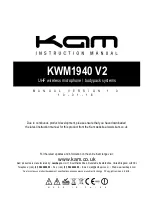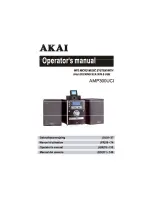
Page 32
Ph: 804.227.3023
10511 Old Ridge Rd. Ashland, VA 23005
4LHD/4LHDX Application Manual
Powertrain Control Solutions
REV 1.1
Noise and Vibration
Special attention should be given to the following areas when developing a vehicle mounting system. Attachments to
these areas where the noise is generated will result in a direct noise path and could ultimately result in noise quality
concerns. In addition, mounts should not have the same excitation frequency at or near the natural vibrations of the
following components:
• Gears
• Bearings
• Converter
• Oil pump
2.2.3 Extension Housings
Typical vehicle mounting applications are shown in Figures 2.2.3-1 to 2.2.3-10. All four standard extension housings
available through PCS have integrated vehicle mounts. Any proposed boss locations and threaded fastener designs
must have PCS Engineering approval for load analysis. Mount loads should be supplied by the customer. For an updated
list of vehicle mount options reference the
PCS OEM Parts Catalog
. The factory torque rating for the six transmission to
extension housing bolts is 37 ft*lbs / 45 N*m. In addition, the speed sensor bolt in 2WD applications has a torque rating
of 8 lb*ft / 11 N*m.
A proper installation supports the transmission weight but must also:
• Avoid loading the internal components
• Allow for frame twist
• Absorb driveline torque
• To damp driveline shock forces
• Not exceed 200 lbs on transmission mount
GM 2WD Extension Housing
Used in rear wheel drive applications, this extension housing does not have a parking brake incorporated. When installed
properly the journal of the slip yoke provides a seal for the rear of the transmission. This is critical due to the lubrication
jet and return vent on the rear face of the 4LDH/4LHDX. The slip yoke features referenced in the table below are
required to ensure proper functionality and durability of the driveline system with respect to the transmission interface
subcomponents i.e., bushing and seal. There are many options available through Spicer and other manufacturers, as
each vehicle has different driveline lengths and power ratings. A common example is the Spicer 2-3-12411X from their
Slip Yoke Assemblies Catalog. Reference Figure 2.2.3-1 for transmission output interface.
NOTE: For the finishing procedure, Residual burrs produced by the turning, grinding and polishing operations to the slip yoke journal must be of a
favorable i.e., non-aggressive direction of lay to the journal rotational direction when the vehicle is in forward drive.
Slip Yoke Details
Spline Type
27 Tooth (Involute)
Journal Diameter
38.176 - 38.151 mm (1.503 - 1.502 in)
Journal Surface Finish
0.25 - 0.50 μm (10 - 20 μin) Ra
















































